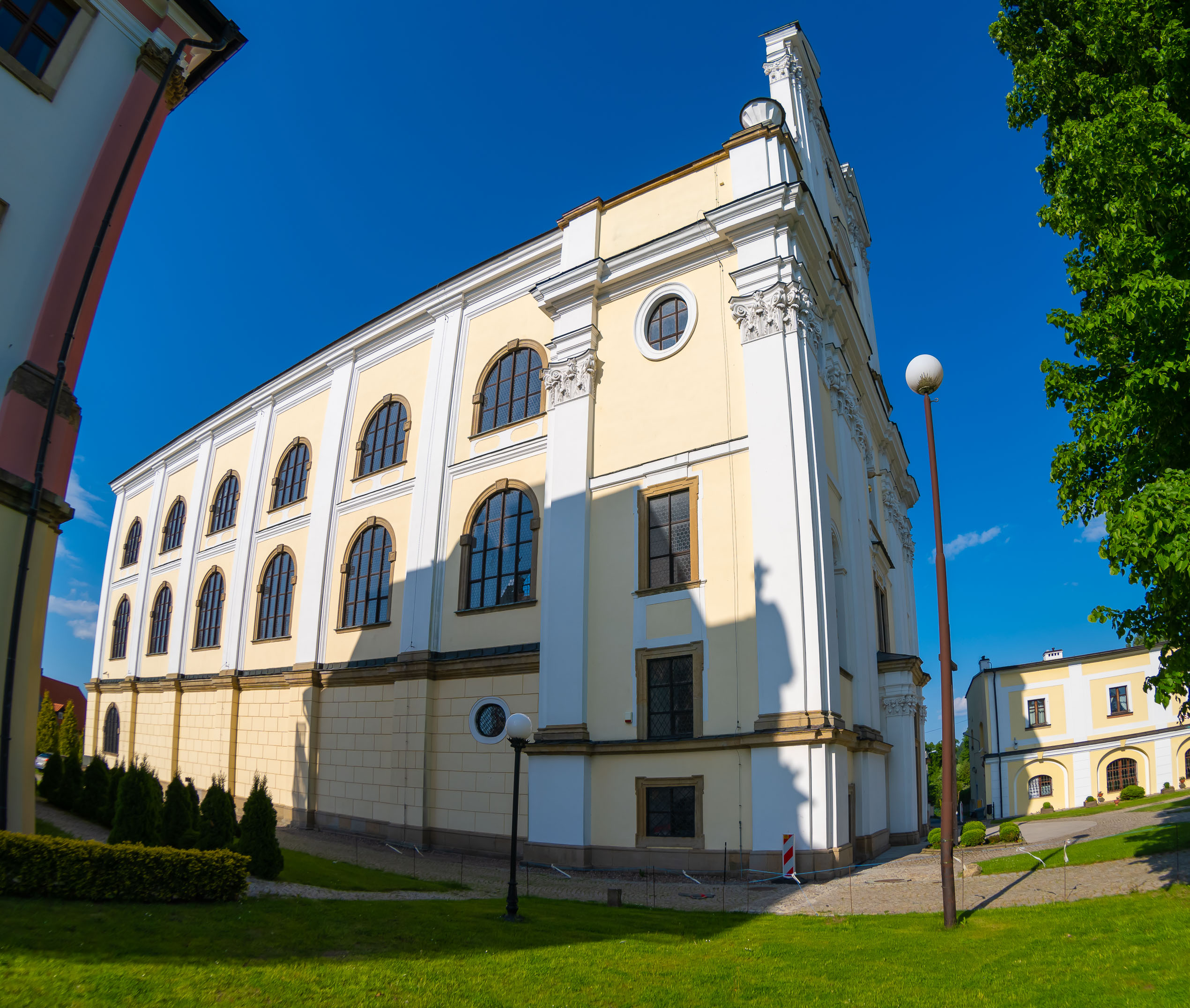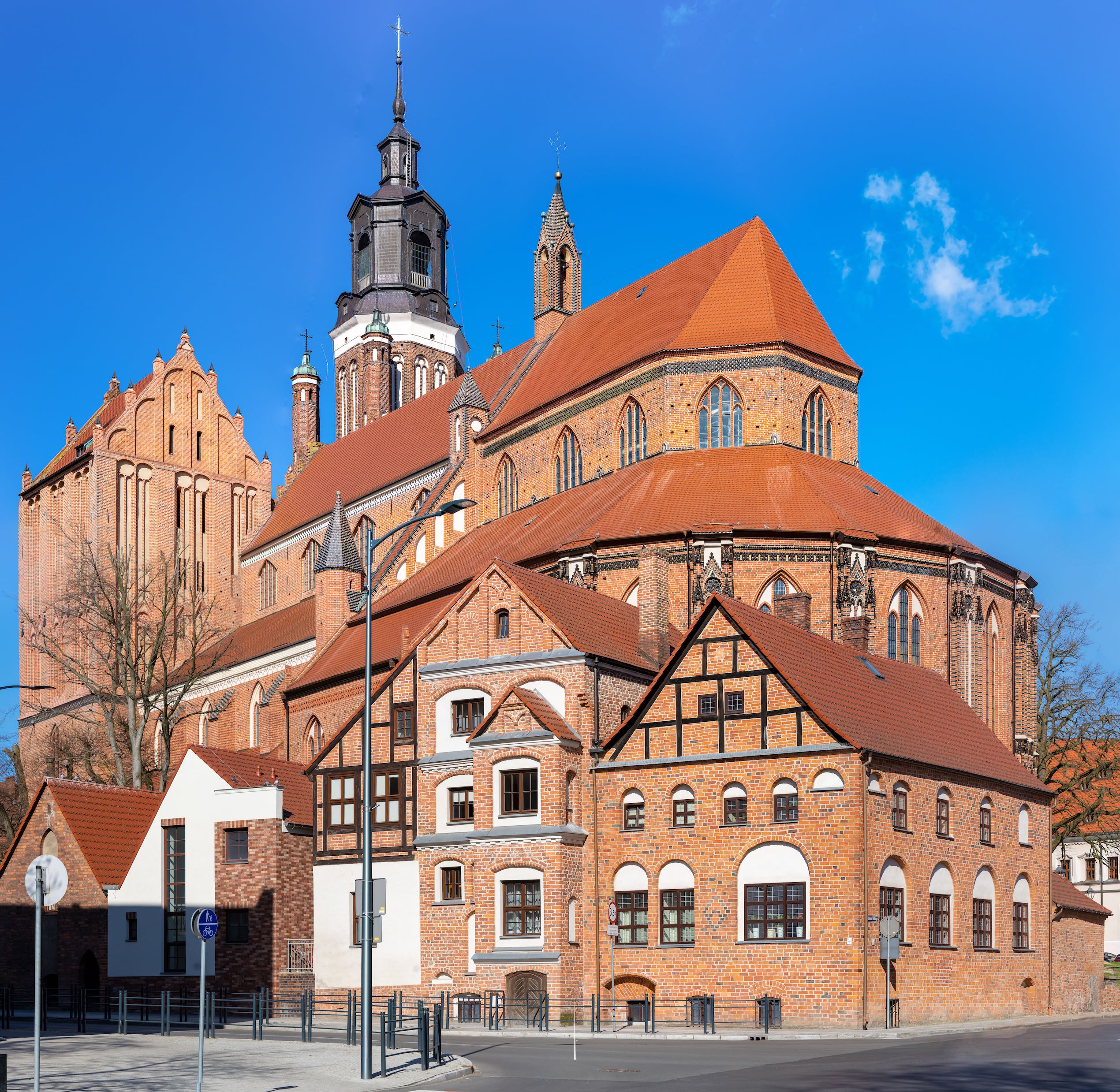Basilica of the Assumption of the Blessed Virgin Mary
Cistercian Abbey in Krzeszow was founded at the end of the 13th century by the Duke of Swidnica and Jawor, Bolko I the Strict. On the 9th of August 1292, 12 monks led by Abbot Theodoric arrived in Krzeszow and occupied the existing buildings. On the 8th of September, the deed of foundation was issued, and the abbey received the title of the Grace of the Holy Mary.
At the end of the 13th century, a monastery and the Abbey Church of St. John the Baptist were built in Krzeszow. The church was intended for the use of monks. Presumably, Duke’s entourage supported Cistercians during construction work. With time, wooden structures began to be replaced by brick buildings which were extended and equipped. Also, work was carried out on construction of new churches around the abbey. At the beginning of the 16th century, a church whose patron was Christ’s grandmother was built on the nearby St. Anna’s Mountain. Several dozen years later, parish Church of St. Andrew was built there. Abbey’s development peaked in the 17th and 18th centuries when new Baroque churches were erected: the Fraternity Church of St. Joseph, the Abbey Church of the Assumption of the Blessed Virgin Mary and a new monastery. In 1810 Frederick William II issued an edict which brought abbey’s existence to an end.
Basilica of the Assumption of the Blessed Virgin Mary in Krzeszow is one of the most outstanding examples of Silesian Baroque. In 1727 Innocent Fritsch who had just been elected an Abbot, decided to demolish the Gothic monastery Church of St. John the Baptist. In its place, he planned to build a Baroque church which was supposed to be a Catholic response to the Protestant churches of imperial grace. Its construction began on the 6th of March 1728 and completed 7 years later – on the 3rd of July 1735 when consecration took place. Employment of the most eminent team of craftsmen and artists allowed the work to be finalised as fast as possible. Apparently 73 bricklayers, carpenters, stonemasons and sculptors were involved. Today we are able to admire a fully completed and impressive result of their joint work.
The portal and the facade face west. The facade is generously decorated with columns, pilasters and sculptures by Ferdinand Brokoff of Prague. The twin towers are covered with copper and their height is 71 metres. The facade of the church is a creation of great expression and profound theological thought. Its interior consists of three thematic groups: the sculptures of Moses, the saints of Cistercian monastery, also some scenes from the life of the Mother of God and above them six figures symbolising the attributes of Christ: “Admirabilis” (True), “Consiliarius” (Ruler), “Deus” (God), “Fortis” (Strong), “Pater futuri seaculi” (Father of the future century) and “Princeps pacis” (Prince of Peace). On the top of the facade we can admire an impressive group of the Holy Trinity.
The roof truss was constructed by 13 carpenters and it was made of oak and fir. Wood was supplied by monastery forests. The construction of the mansard roof required that none of the beams forming the roof truss should touch the vaults. Therefore, the wooden structure leans against the side walls of the church. In its widest place the roof truss measures 29 metres and it is 80 metres long. According to the regulations back in the day, the monastery Church of the Assumption of the Blessed Virgin Mary was based on a Latin cross plan.
Every visitor is amazed by its monumentality and opulent decorations. This piece of work was created by some eminent builders and artists who were also working in other areas such as Czech Republic and Silesia. The interior is an example of a galleried hall church where we have only one nave and the rows of chapels create an illusion of a three-nave interior. The church is covered with a mansard roof above which there is a fleche (a small turret) exactly above the intersection of the main nave and transept. There are two towers, each 71 metres high. The facade of the church is the so-called “Path of Grace” which consists of three stages and has its source between the towers in the “Throne of Grace”.
Behind the main altar of the former monastery Church of the Assumption of Blessed Virgin Mary we find a room which commemorates the founders of the Cistercian Abbey in Krzeszow. It was designed and built as an integral part of the church. The Mausoleum of the Silesian Piast Dynasty which was completed around 1738, was intended to be a new resting place for Swidnica – Jawor Duke Bolko I the Strict and his successors, including Bolko II the Small. In addition to sarcophagus of the rulers, the room also includes: the tomb of Wladysław von Zedlitz, three altars dedicated to All Saints, Waclaw and Jadwiga. However, its central part is taken by the epitaph commemorating the legendary Bolko III.
Photographs
Gigapanoramas
Videos
)
)
)
)
)
)
)
)
)